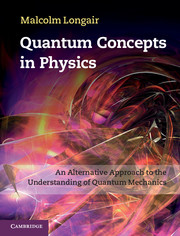Book contents
- Frontmatter
- Contents
- Preface
- Acknowledgements
- Part I The Discovery of Quanta
- Part II The Old Quantum Theory
- Part III The Discovery of Quantum Mechanics
- 10 The collapse of the old quantum theory and the seeds of its regeneration
- 11 The Heisenberg breakthrough
- 12 Matrix mechanics
- 13 Dirac's quantum mechanics
- 14 Schrödinger and wave mechanics
- 15 Reconcilingmatrix and wave mechanics
- 16 Spin and quantum statistics
- 17 The interpretation of quantum mechanics
- 18 The aftermath
- Epilogue
- Notes
- References
- Name index
- Subject index
11 - The Heisenberg breakthrough
from Part III - The Discovery of Quantum Mechanics
Published online by Cambridge University Press: 05 February 2013
- Frontmatter
- Contents
- Preface
- Acknowledgements
- Part I The Discovery of Quanta
- Part II The Old Quantum Theory
- Part III The Discovery of Quantum Mechanics
- 10 The collapse of the old quantum theory and the seeds of its regeneration
- 11 The Heisenberg breakthrough
- 12 Matrix mechanics
- 13 Dirac's quantum mechanics
- 14 Schrödinger and wave mechanics
- 15 Reconcilingmatrix and wave mechanics
- 16 Spin and quantum statistics
- 17 The interpretation of quantum mechanics
- 18 The aftermath
- Epilogue
- Notes
- References
- Name index
- Subject index
Summary
Heisenberg in Göttingen, Copenhagen and Helgoland
Werner Heisenberg studied under Sommerfeld in Munich and was present at the Bohr Festspiele held in Göttingen in 1922 (Sect. 8.2). Although aged only 20, he challenged Bohr's support of Kramers' analysis of the quadratic Stark effect, having studied the paper in detail for Sommerfeld's seminar in Munich. The result was a long walk with Bohr during which they discussed this topic and the more general problems of quantum physics. This encounter made a strong impression on Heisenberg. Much later Heisenberg stated:
‘That discussion, which took us back and forth over Hainberg's wooded heights, was the first thorough discussion I can remember on the fundamental physical and philosophical problems of modern atomic theory, and it has certainly had a decisive influence on my later career. For the first time, I understood that Bohr's view of his theory was much more sceptical than that of many other physicists – for example, Sommerfeld – at that time, and that his insight into the structure of the theory was not a result of mathematical analysis of the basic assumptions, but rather of an intense occupation with the actual phenomena, such that it was possible for him to sense the relationships intuitively rather than derive them formally.’
Heisenberg spent the winter of 1922–1923 working in Göttingen as Born's assistant. The astronomers had made great progress in the use of perturbations techniques within the action–angle formulation of classical dynamics to study the gravitational perturbations of planetary orbits.
- Type
- Chapter
- Information
- Quantum Concepts in PhysicsAn Alternative Approach to the Understanding of Quantum Mechanics, pp. 203 - 223Publisher: Cambridge University PressPrint publication year: 2013



